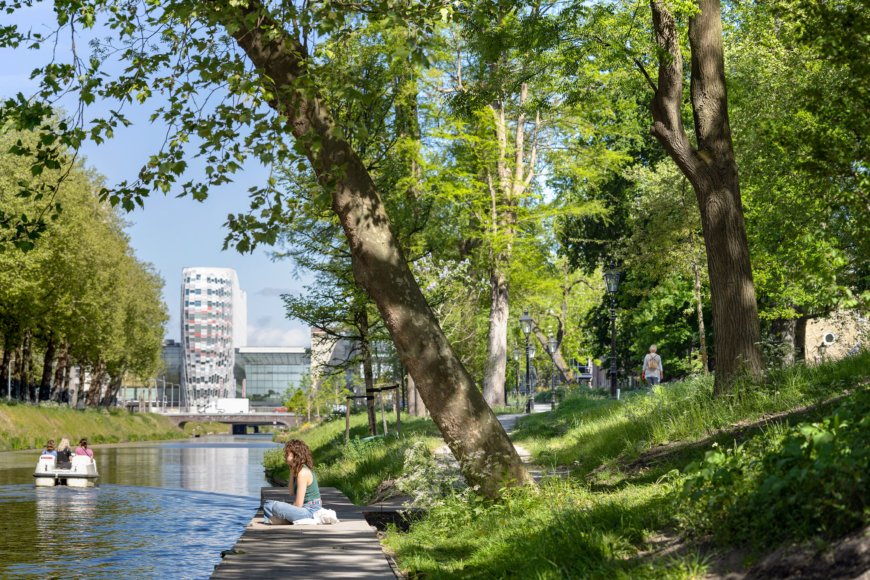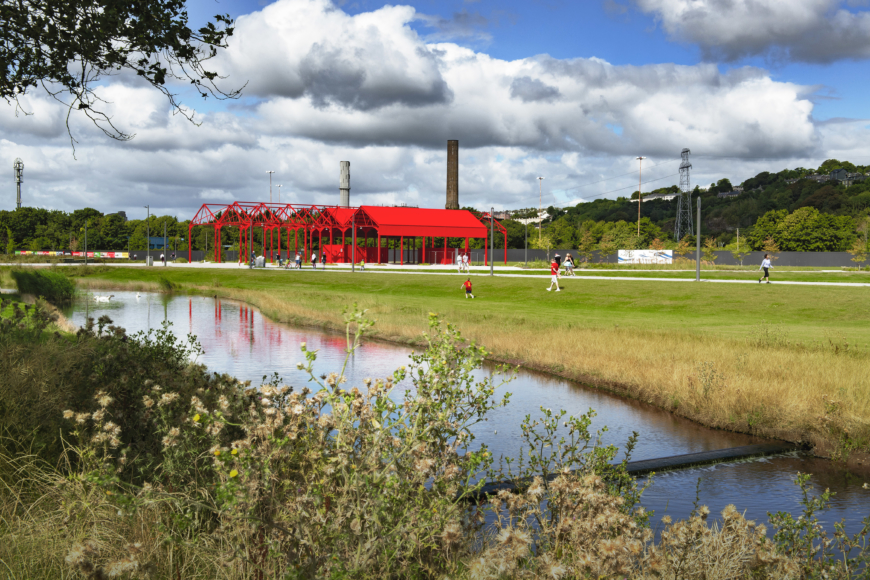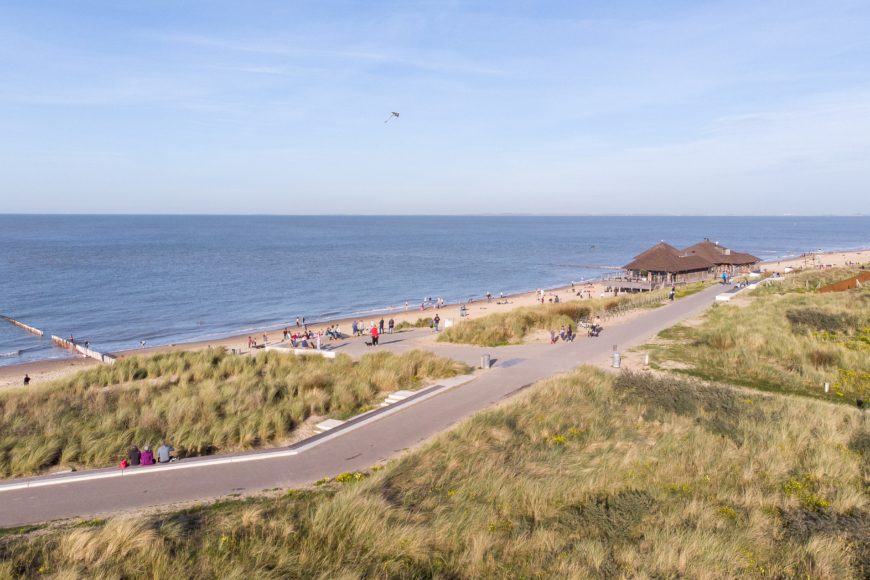
World Mental Health Day!

On this World Mental Health Day, we reaffirm our commitment to mental wellbeing, both for individuals and for the cities and environments we shape. In a world increasingly burdened by overcrowding, noise, pollution, traffic, and limited daylight, the impact on mental health is undeniable. Studies show that urban populations face higher rates of depression, anxiety, stress, dementia, ADHD, schizophrenia and more. These challenges demand action.
Our practice is dedicated to designing and realising healthy cities, grounded in the conviction that mindfulness is essential for urban life. Every project we undertake prioritizes wellbeing, creating landscapes that support mental clarity, restore balance, and foster meaningful connections with nature, where all species can truly thrive. In response to this urgent need, we are investing more than ever in the research of “healing landscapes,” both from outside and inside the scope of our discipline.
Healing landscapes
Our research has identified a set of interrelated themes that shape users’ wellbeing. Which themes matter most varies by site and brief: some guide the design from the outset, while others become priorities as the project unfolds. We always start from context, listening to place, people and purpose, so each space is shaped by its surroundings and the real needs of those who use it.
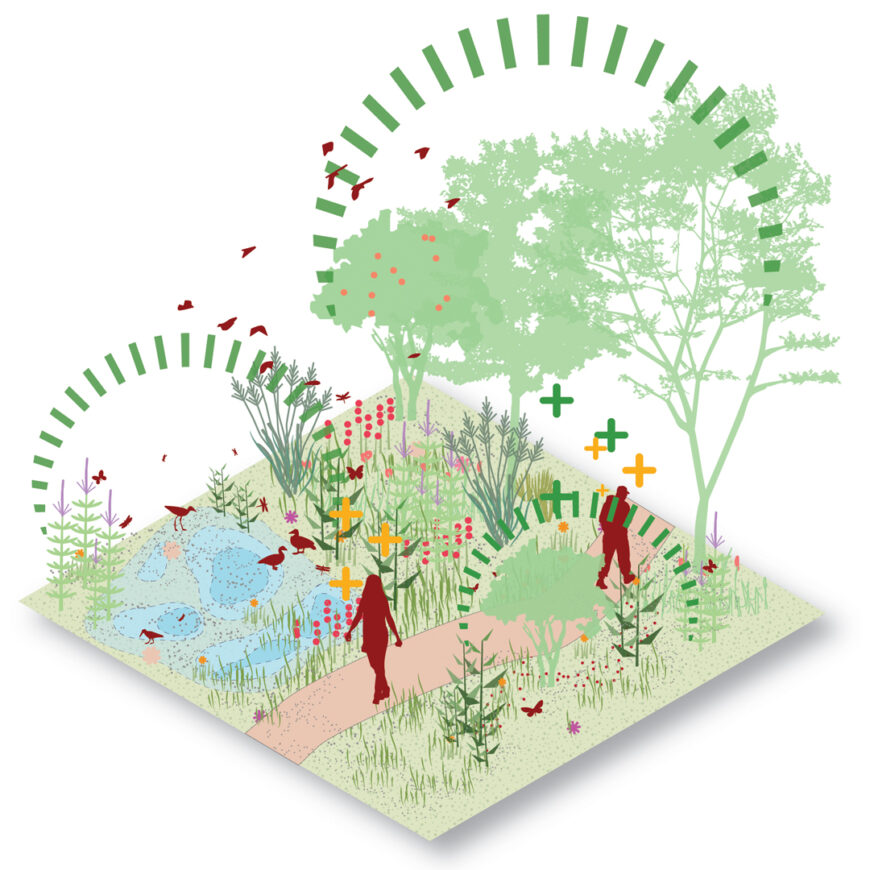
Connection with nature
High-biodiversity landscapes promote human, ecological, and climate resilience. Regular exposure to plants, water, daylight, and seasonal variation improves sleep, lowers blood pressure, reduces loneliness, fosters curiosity, and restores attention. Designing public spaces with rich natural elements harnesses our biologically rooted connection to life.
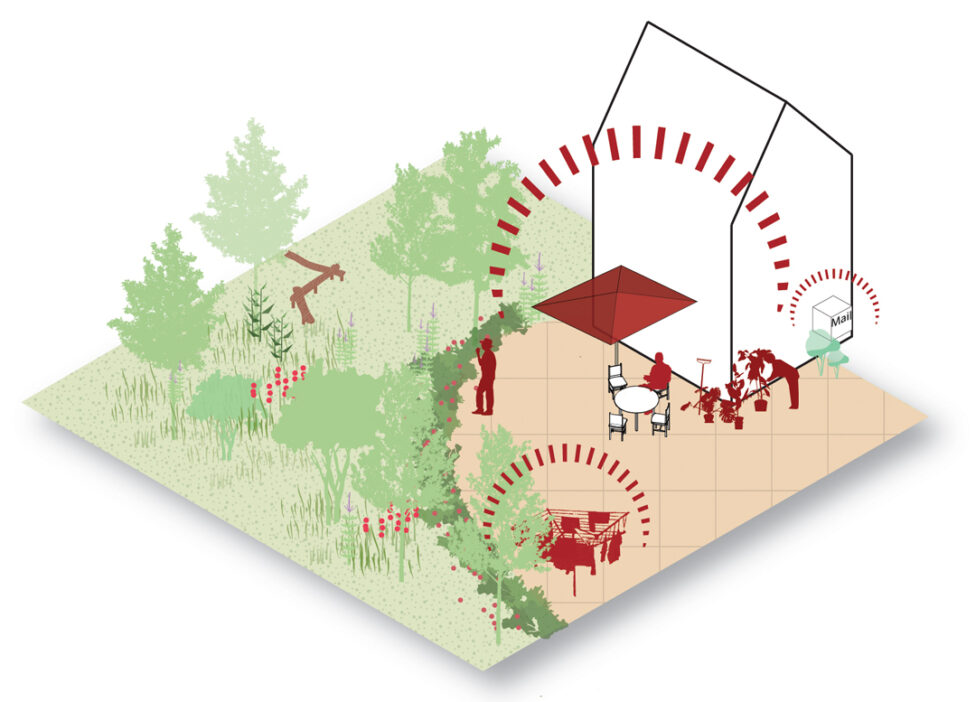
Human-centred and calming environment
Environmental psychology shows that open, uncluttered spaces with natural materials, homely textures, thoughtful shading and familiar elements supports emotional wellbeing. Soft fascination—through rounded shapes, fractal patterns, gentle contrasts, familiar scents, and relaxing sounds—allows the brain to rest while engaging the senses.
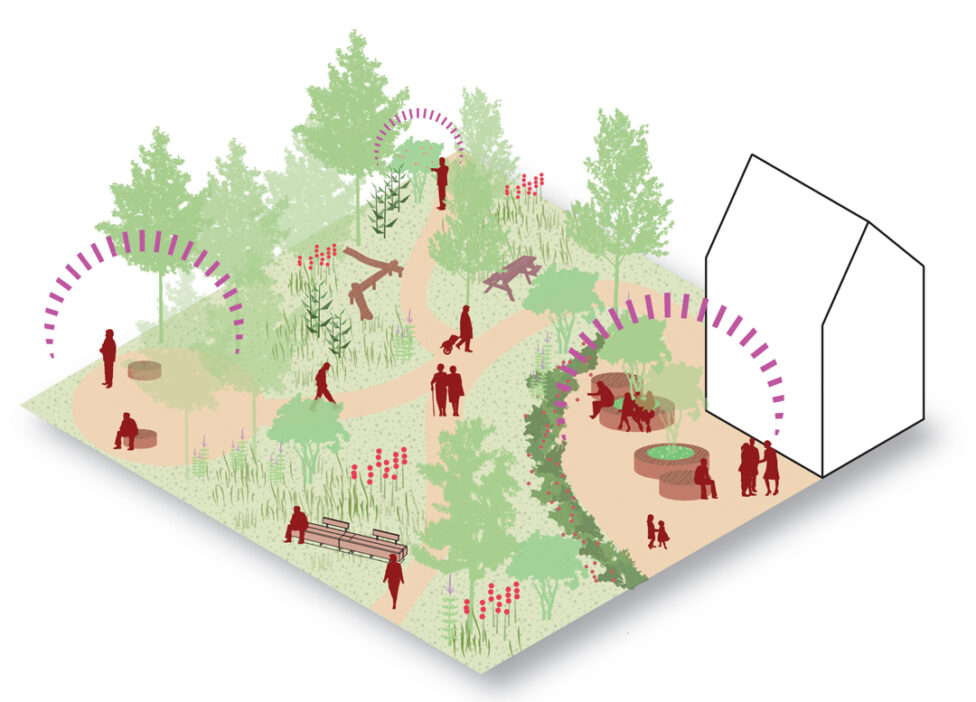
Recovery and social interaction
Therapeutic landscapes engage all the senses to reduce stress, improve mood, and support recovery. Quiet areas, calming soundscapes, mini-forests, and human-free zones enhance biodiversity, reduce noise, and create restorative spaces. While communal spaces such as vegetable gardens and retreat corners foster interaction, supporting social wellbeing.
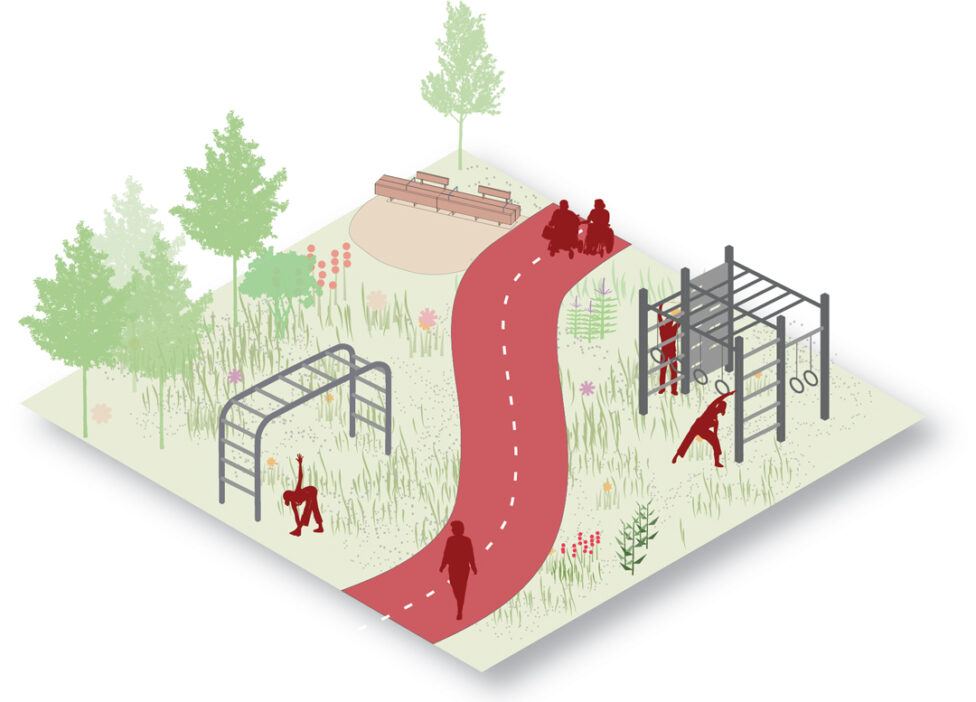
Movement and gentle exploration
Environments that encourage gentle exploration support both mental and physical wellbeing. Engaging landscapes like forest trails, raised planters, resting points, and water features motivate regular time in nature, while promoting walking, gardening, and casual movement, boosting cardio-respiratory fitness, overall strength, and cognitive function.
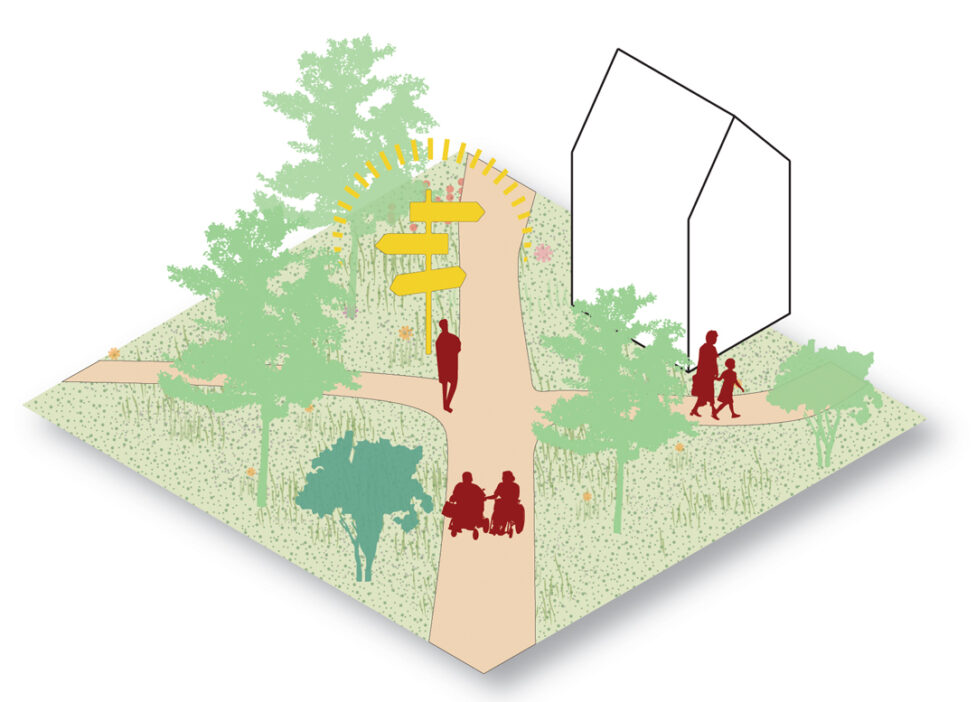
Orientation and accessibility in design
The most restorative landscapes are both engaging and easy to navigate. Clear paths, visible entrances, landmarks, and gentle curves help users form mental maps, reduce cognitive load, and prevent disorientation. Intuitive, legible spaces support confidence, lower stress, and make environments both soothing and stimulating.
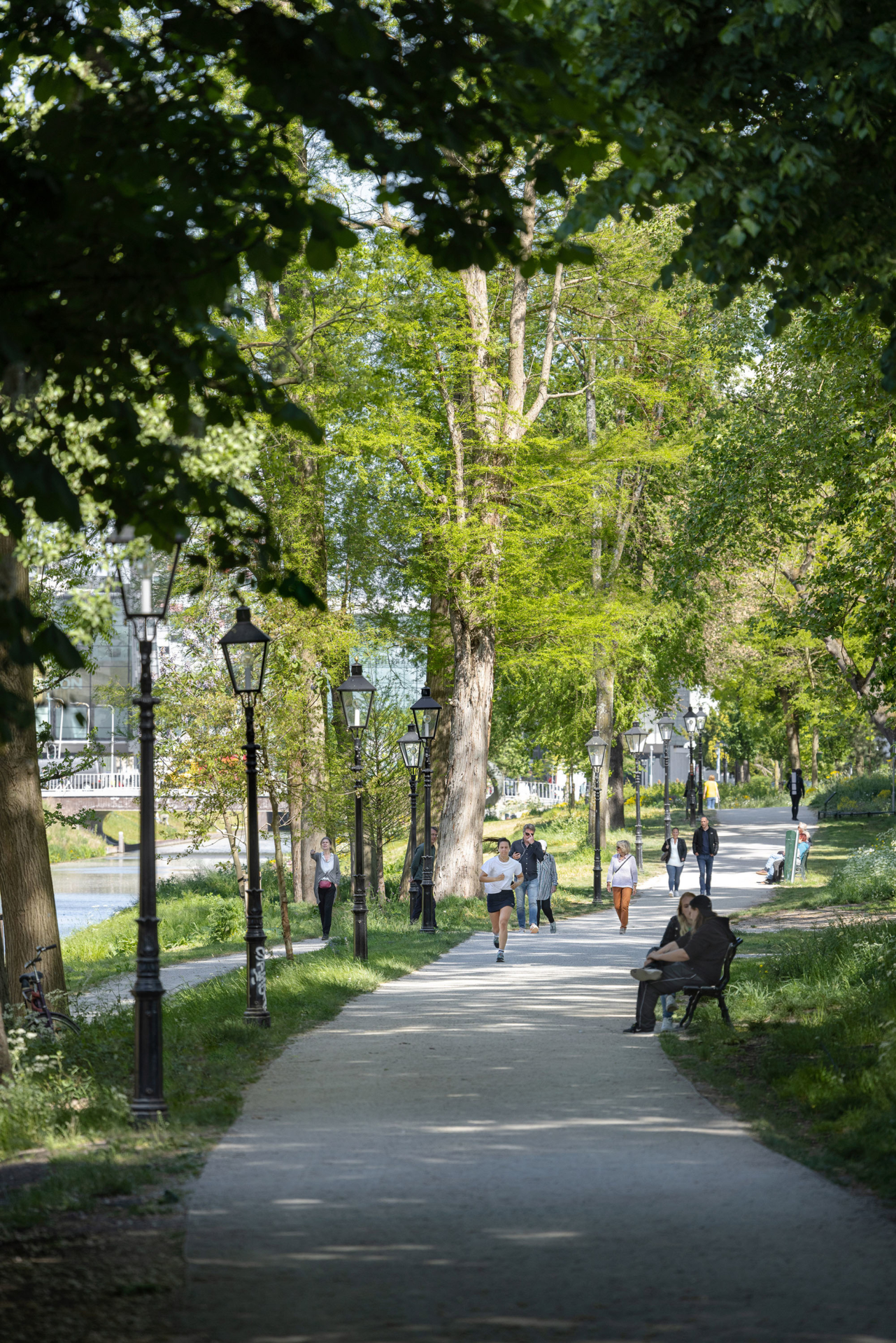
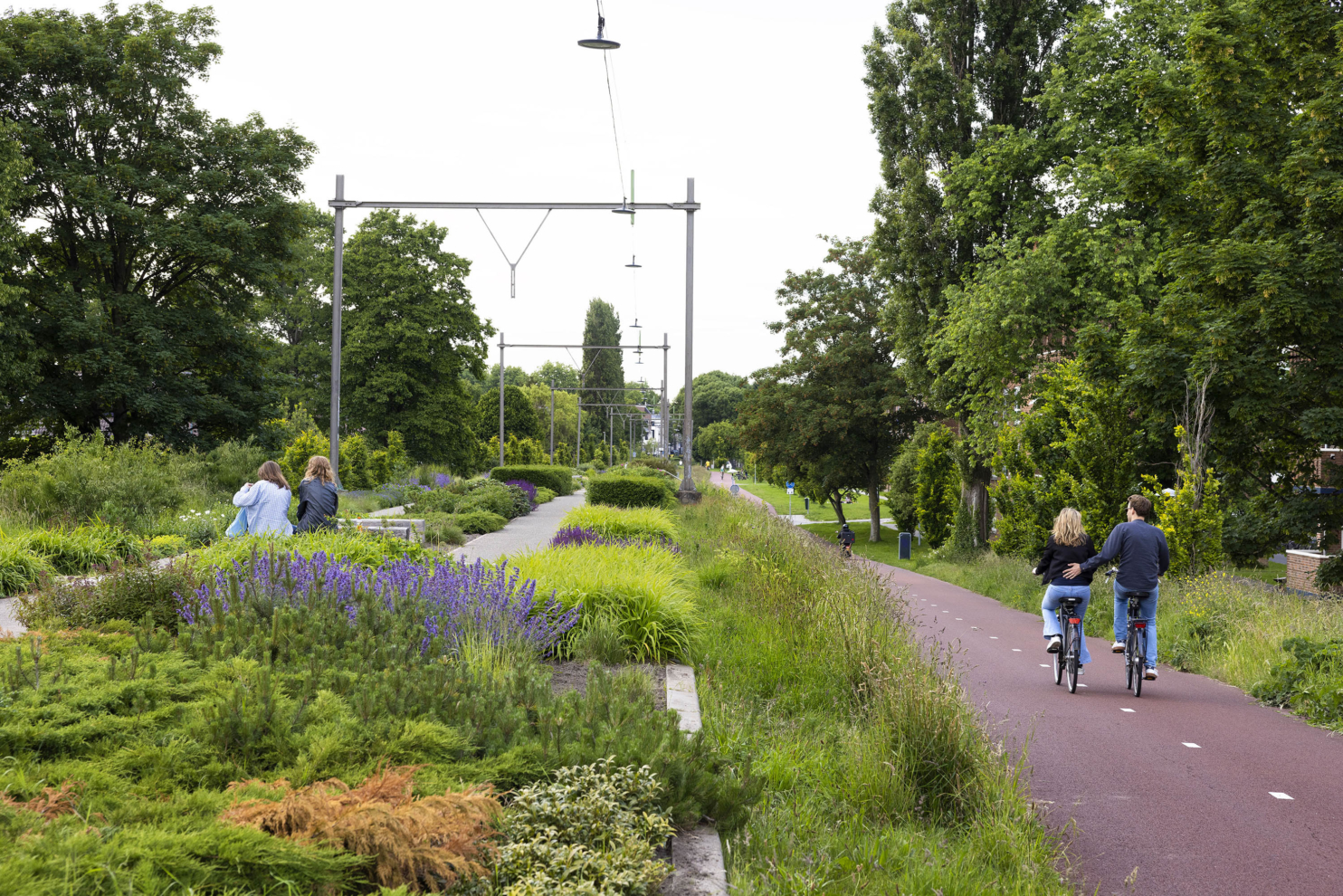
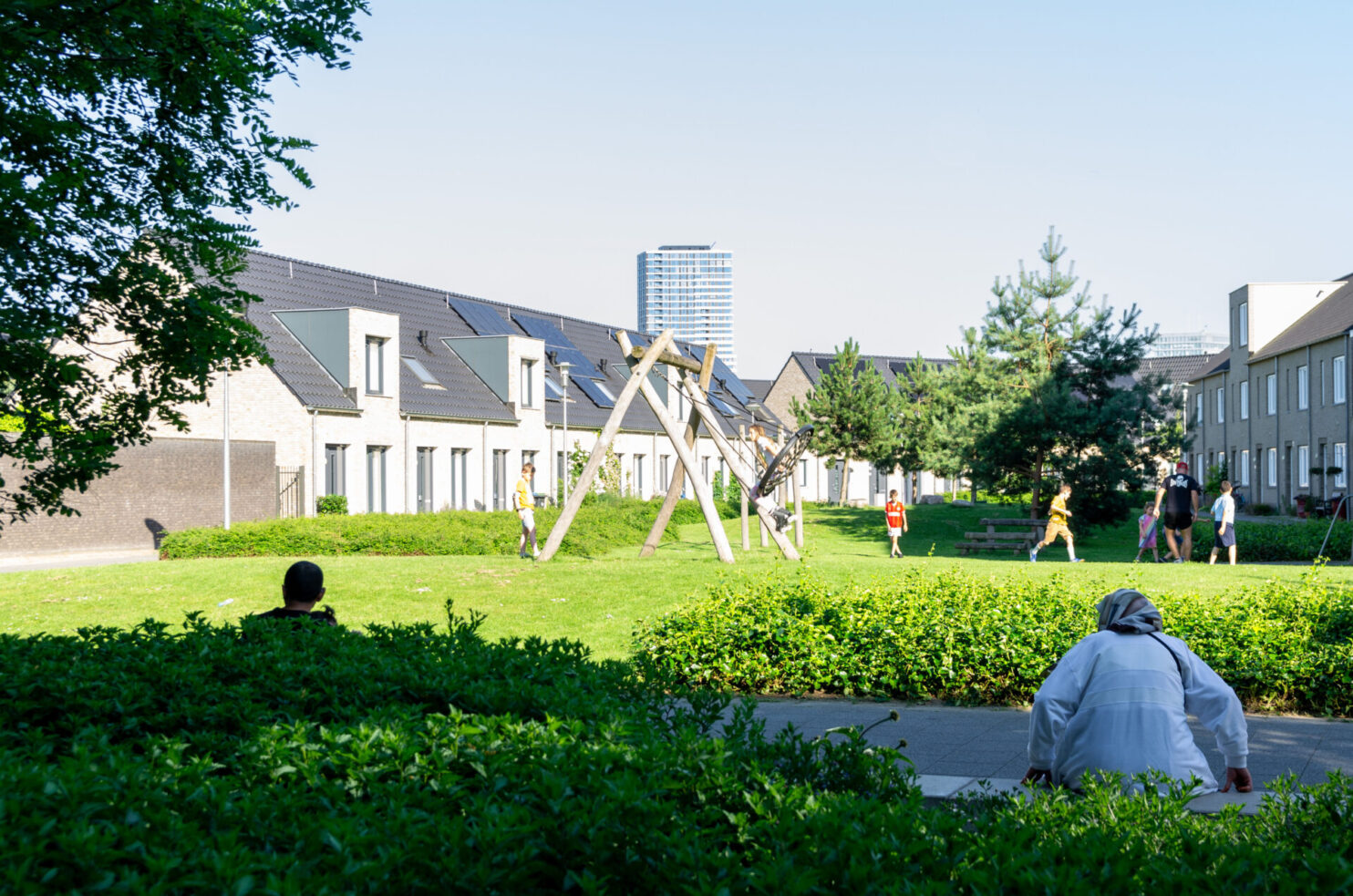
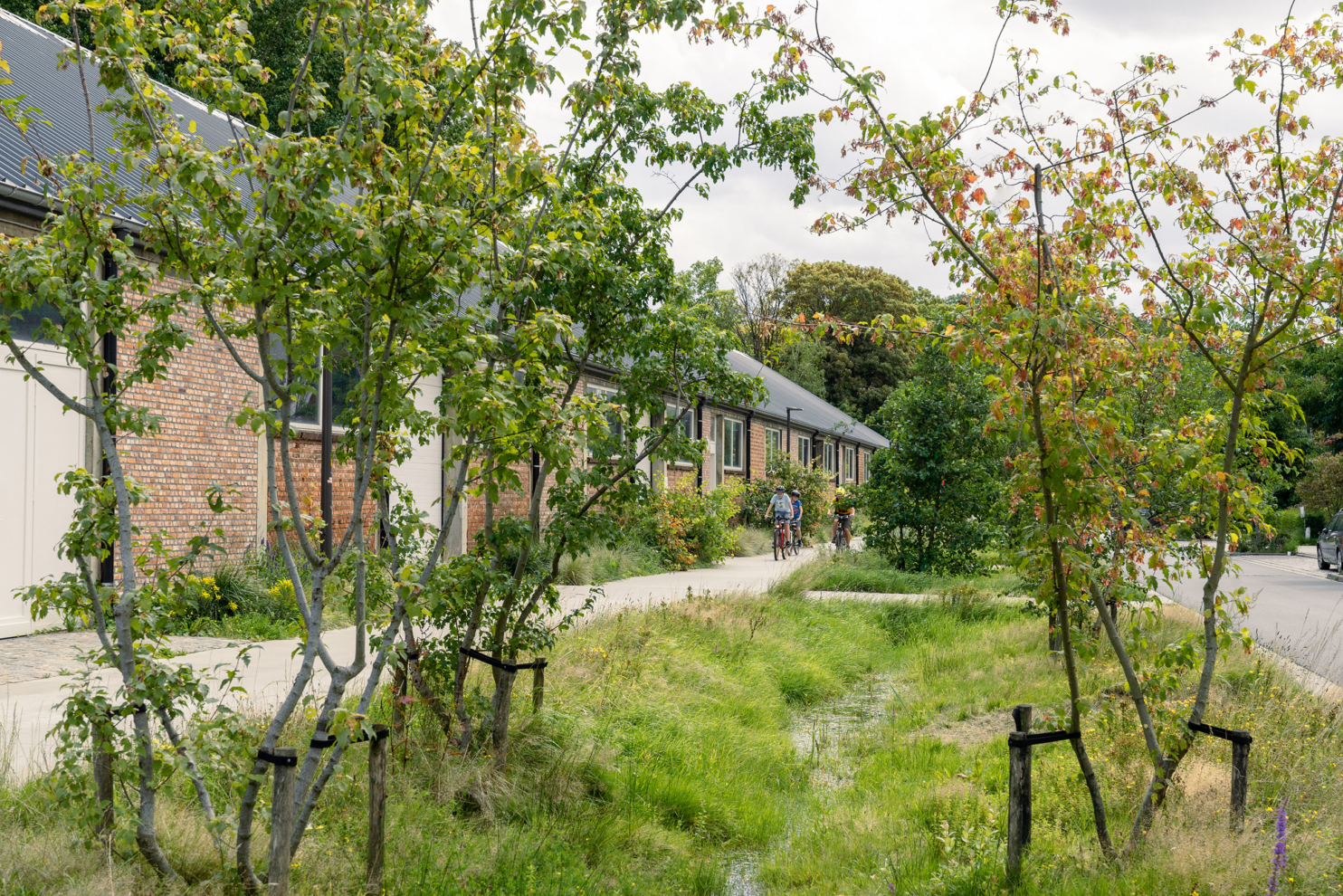



Our designs have always embraced the understanding that environments shape wellbeing. We continue to design landscapes that positively impact human mental health and create spaces where people and nature can flourish together.
